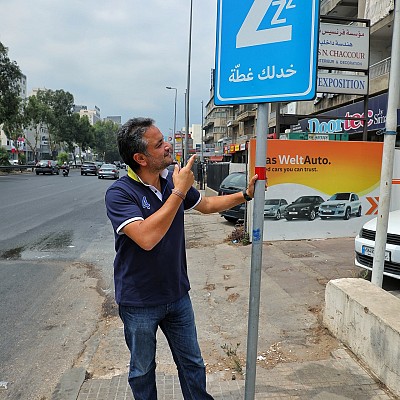Motorcycle travel is thrilling and offers a sense of freedom that other forms of transportation simply don’t. However, this freedom comes with increased responsibility, as motorcyclists face more dangers on the road than car drivers. Unlike in a car, riders have minimal protection and are exposed to severe injuries in the event of an accident. Fortunately, there are several strategies motorcyclists can follow to reduce risks and enhance their safety on the road. Below are some key ways to stay safe and avoid accidents while traveling on a motorcycle.
Wear the Right Protective Gear
One of the most effective ways to protect yourself on a motorcycle is by wearing the right gear. The first and most crucial piece of equipment is a well-fitting helmet, which can reduce the risk of a fatal head injury by about 37%. Helmets should meet the safety standards set by organizations like the Department of Transportation (DOT) and Snell Memorial Foundation.
Beyond helmets, motorcyclists should wear gear specifically designed for riding, including abrasion-resistant jackets, gloves, pants, and boots. These items not only offer protection in the event of an accident but also shield you from the elements. For example, jackets and pants made from leather or other reinforced materials can prevent serious injuries such as road rash during a slide. Gloves with protective padding are essential for maintaining a good grip and preventing hand injuries, while boots that cover the ankles provide support and protect the feet from burns and other injuries. Always opt for bright, reflective gear to increase your visibility to other drivers.
Know What to Do in Case of an Accident
Even if you follow all the safety guidelines, accidents can still happen. It’s important to know what steps to take immediately after a motorcycle crash. First and foremost, seek medical attention, even if you don’t feel hurt right away. Injuries from motorcycle accidents, such as internal trauma or concussions, may not show symptoms until hours later.
After addressing your health, gather evidence from the scene, including photos of your bike, the other vehicle, and any damage. If the accident was caused by another driver, consulting with a motorcycle accident attorney is a crucial step. An attorney can help you navigate the legal process, ensuring that your rights are protected and that you receive fair compensation for medical bills, property damage, and lost wages. Motorcycle accidents can result in serious financial burdens, and having an experienced legal professional on your side can make a significant difference in your recovery process.
Conduct a Pre-Ride Inspection
Before embarking on any motorcycle travel journey, even a short one, it’s important to conduct a thorough pre-ride inspection. This practice allows you to identify any potential mechanical issues that could lead to dangerous situations on the road. First, check the tire pressure and tread depth to ensure your tires are in good condition. Under-inflated or worn-out tires can lead to reduced traction, increasing the likelihood of an accident, especially in wet or slippery conditions.
Next, check your brakes. Ensure that both the front and rear brakes are working correctly, as stopping power is crucial in avoiding collisions. Test the headlights, turn signals, and brake lights to ensure that all your lights are functioning and visible to other road users. Don’t forget to check fluid levels, including oil and brake fluids, as low levels can affect your bike’s performance and lead to breakdowns on the road. Keeping your chain or belt lubricated and in good condition also ensures smoother rides and reduces the risk of mechanical failure mid-ride.
Maintain a Safe Following Distance
Maintaining a safe distance from the vehicle in front of you is one of the most important defensive riding strategies. Motorcycles, while smaller, require careful attention to stopping distances, as sudden stops or obstacles can result in accidents. Keeping a safe following distance allows you to react in time if the vehicle ahead of you suddenly slows down, stops, or swerves to avoid road hazards. The general rule of thumb is to maintain at least a two-second gap in normal conditions.
However, this distance should be increased to three or four seconds in adverse weather conditions, like rain or fog, or when riding on poorly maintained roads. Wet or icy surfaces reduce tire traction, making it harder for your motorcycle to stop quickly. Similarly, when traveling at high speeds on highways or in areas with heavy traffic, increase the following distance to give yourself more reaction time. This space is vital, especially since motorcycles can be harder to control during sudden maneuvers.
Be Mindful of Blind Spots
Motorcycles are smaller and less visible than cars or trucks, which means they are more likely to be in the blind spots of other drivers. As a motorcyclist, it’s critical to be aware of these blind spots and avoid lingering in them. Stay out of the areas directly behind and beside larger vehicles where you might not be seen. If you need to pass a car or truck, do so quickly and avoid staying alongside them for extended periods.
Being proactive about your positioning on the road can make a big difference in preventing accidents. Try to ride in a part of the lane where you are most visible to drivers ahead and behind you. If you are unsure whether a driver can see you, try to make eye contact with them. Additionally, using your motorcycle’s high beams during the day or keeping your headlights on can help increase your visibility. Remember, it’s always safer to assume that other drivers don’t see you unless they signal otherwise.
Obey Speed Limits and Adjust for Road Conditions
Speed is a leading factor in many motorcycle accidents. While motorcycles can accelerate quickly and weave through traffic more easily than larger vehicles, speeding reduces your reaction time and makes it more difficult to handle unexpected obstacles, such as debris or sharp turns. Always obey posted speed limits and adjust your speed according to the road conditions.
For example, during rain or fog, visibility is reduced, and wet roads increase the likelihood of skidding or hydroplaning. Slow down and ride more cautiously in such conditions, keeping in mind that braking distances increase on slick surfaces. Similarly, be extra vigilant when riding through construction zones or areas with uneven pavement, as these conditions can affect the stability of your bike. By adjusting your speed to the conditions of the road, you can maintain better control of your motorcycle and reduce the risk of losing traction or crashing.
Avoid Riding Under the Influence
Operating a motorcycle under the influence of alcohol or drugs is incredibly dangerous. Unlike driving a car, where drivers are somewhat protected by the vehicle’s structure, motorcyclists have little to no protection in the event of a crash. Alcohol impairs judgment, coordination, and reaction times, all of which are crucial for safe riding. Even a small amount of alcohol can significantly affect your ability to control your motorcycle, especially in high-pressure situations.
If you plan on drinking, it’s essential to arrange alternative transportation or wait until you are completely sober before getting back on the road. Remember that even some prescription medications can impair your ability to ride safely, so always check the side effects of any medications you’re taking. The consequences of riding under the influence can be severe, not just in terms of legal penalties but also in terms of your safety and that of others on the road.
By following these safety guidelines and being proactive about your riding habits, you can enjoy the freedom of motorcycle travel while minimizing your risk of accidents. Safety should always be a priority, and proper precautions can help ensure your journeys are as safe as they are enjoyable.






































